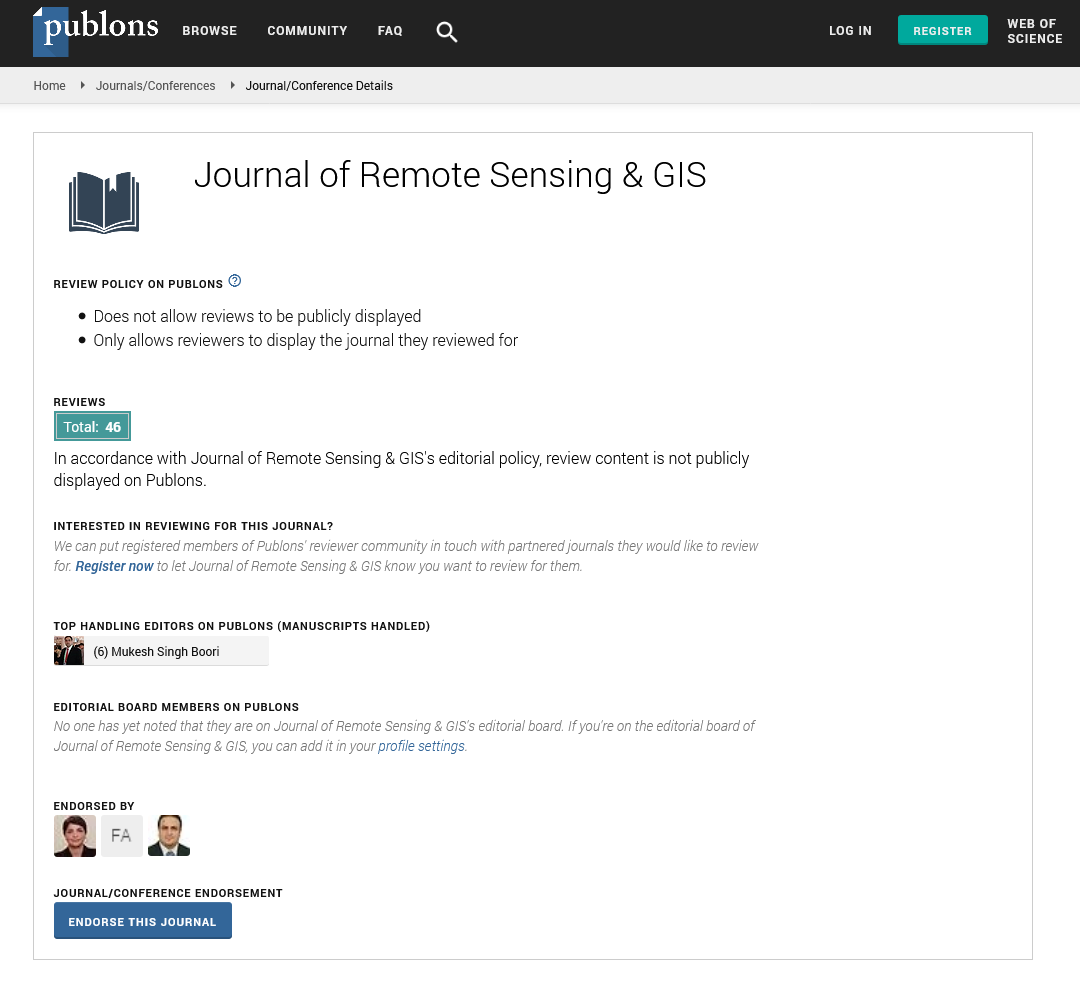Indexed In
- Open J Gate
- RefSeek
- Hamdard University
- EBSCO A-Z
- OCLC- WorldCat
- Publons
- International Scientific Indexing
- Euro Pub
- Google Scholar
Useful Links
Share This Page
Journal Flyer

Open Access Journals
- Agri and Aquaculture
- Biochemistry
- Bioinformatics & Systems Biology
- Business & Management
- Chemistry
- Clinical Sciences
- Engineering
- Food & Nutrition
- General Science
- Genetics & Molecular Biology
- Immunology & Microbiology
- Medical Sciences
- Neuroscience & Psychology
- Nursing & Health Care
- Pharmaceutical Sciences
Use of EOS geospatial data for earth science
5th International Conference on GIS and Remote Sensing
September 16-17, 2019 | Rome, Italy
Brandi Quam
NASA Langley Research Center, USA
Posters & Accepted Abstracts: J Remote Sens GIS
Abstract:
Many scientists including those from government and private industry use Earth Observing System (EOS) geospatial data to manage organizational infrastructure, quantify atmospheric and agricultural changes, and plan future development. The diversity and complexity of scientific data pose challenges in how it is managed and shared with a diverse community, visualized intuitively, and fused for answering scientific questions. Spatial data infrastructure for Earth Sciences is built atop frameworks that support satellite imagery, airborne data, climateweather observations, simulations, and forecasts. Such frameworks allow us to ingest and manage data, generate science products, and develop applications that support end user’s needs. This informative poster or session seeks to describe operational systems and workflows for deploying multidimensional, spatio-temporal scientific data for the broader Earth Science community. Join us as we demonstrate how we are supporting NASA’s ability to observe global change and address the Agency’s strategic objective for Earth Science, which is to advance knowledge of Earth as a system to meet the challenges of environmental change, and to improve life on our planet.

